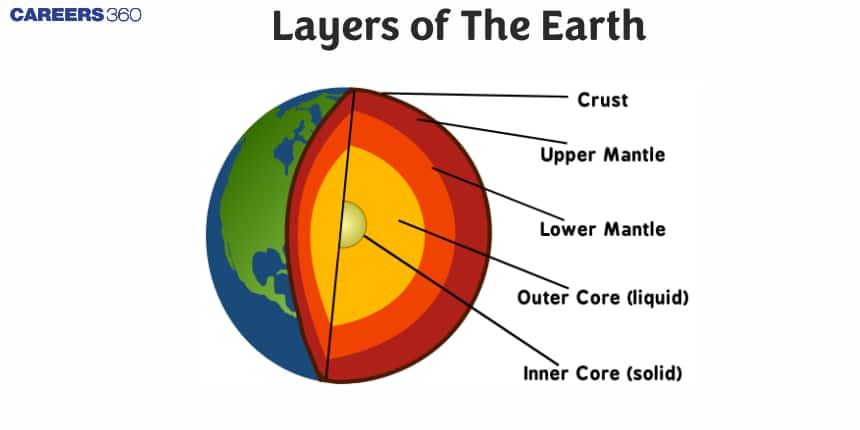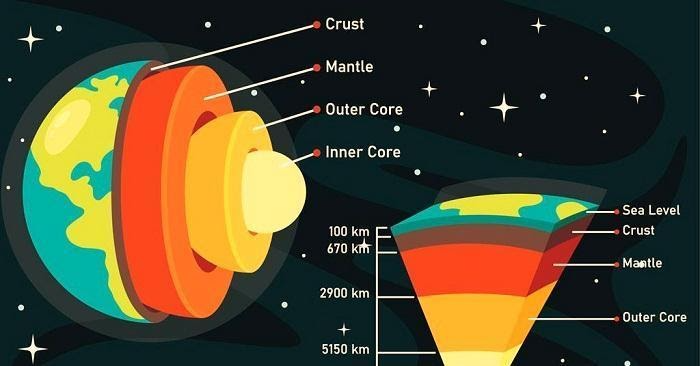Layers of The Earth - Inner Core, Outer Core, FAQs
In this article, we will discuss about the layers of the earth, what are the three layers of the earth, what the innermost layer of the earth is, layers of the earth diagram, earth layers name, what the uppermost layer of the earth is called, earth diagram, three layers of earth, parts of the earth, what is mantle, what is the earth made up of, earth picture drawing, what is the earth made up of, earth core temperature, the outer core is made up of, what are the layers of the earth, how many layers of earth, earth's inner core, different layers of the earth, we will name the three layers of the earth, the layer of the earth on which we live, the innermost layer of the earth is called, outer layer of earth, what is the innermost layer of the earth, the topmost layer of the earth, the uppermost layer of the earth, which is the innermost layer of the earth, what is inside the earth, what is core of the earth, recall what are the three layers of the earth class 7, difference between crust and core, compositional layers of the earth etc.
This Story also Contains
- Introduction
- What are the three layers of the earth?
- What is the earth made up of?
- What are the three layers of the Earth?
- a. Crust
- b. Mantle
- c. Core

Also check-
Introduction
What are the three layers of the earth?
The mystery about the Earth will always surprise us. But, there are ways that scientists can discover the composition and properties of these layers. We can compare the mystery of Earth with the peel of onion. As we peel the onion it opens up as the different layers of the Earth unwinding the mystery box. The method by which the scientists collect the data is through seismic monitoring, which is essentially the measurement of the sound waves that are generated when earthquakes cause shifts in Earth’s layers. Due to the velocity of the seismic waves, refraction takes place. As the seismic waves travel through the different layers of different densities, they change direction and speed as they transit from one layer to another.
Scientists also use measurements from Earth’s magnetic and gravitational fields to make judgments about the different layers of the Earth. They can model the layers by using crystalline solids to create simulations of the intense pressures and varying temperatures to get a picture of how the different layers of Earth look. We know that life exists only on the surface of the Earth. We are familiar with the nature of this thin layer to which we call our home. But what lies below the surface? Earlier people believed that the Earth is hollow like a football but gradually we came up with the current layers of Earth.
Related Topics Link, |
Factors affecting Layers of Earth
Each layer of the Earth possesses different characteristics and these differences affect our planet in various ways. These characteristics are:
1. Temperature
2. Pressure
3. Chemical Properties
4. Geological Properties
What is the earth made up of?
Earth’s layers can be imagined as a hard- boiled egg. As we know about the layers in a hard- boiled egg which are the shell, the squishy white part, and the hard yellow part known as the yolk. The shell of the egg is thin, brittle and cracks very easily; the white part is thicker, soft and squishy; and the yolk is like a solid tightly packed ball. Layers of the Earth are not all that different.
What are the three layers of the Earth?
The different layers of Earth are as follows:-
a. Crust
If the Earth is a giant, hard-boiled egg, then the crust of the Earth is like the thin, brittle eggshell. The Earth’s crust did not form from heavy and light elements that separated themselves early in Earth’s history as it was in case of the core and the mantle. The formation of the crust is a continuous process. It is also destroyed and reformed by the various processes taking place inside the mantle. The rocks that are found in Earth’s crust are primarily basalts and granites. Basalts are grey or black, fine-textured, heavy rocks. Granites are not-so-heavy pink, grey or black rocks. The crust contains many other elements including sodium sodium, aluminum, potassium and iron. The crust of the Earth is approximately 22 miles (35 km) deep. Even the thickest point of the crust is not more than 50 miles (70 km) deep.
NCERT Physics Notes:
b. Mantle
When we compare the Earth with a giant, hard-boiled egg then we can relate the mantle like the egg’s thick, squishy white part. As the Earth cooled during its formation, the heavy iron fell towards the center, the lighter silicate rocks floated inside the mantle. The Silicates contain all kinds of rocks; basically they contain the elements such as silicon and oxygen. The mantle of the Earth is believed to be made up of mostly silicate rocks. The concentration of rocks in the mantle looks more similar to those basically found at the Earth’s surface. Generally, these rocks are warm by both the decay of radioactive elements and by the heat from the core. As these are also subjected to pressure from the crust, they tend to be semi-liquid, or viscous. The mantle, like the core, is thought to have formed early in the history of the Earth. The thick-flowing mantle is about 1,800 miles (2900 km) thick- taking up about 70% of the Earth by volume. Many scientists divide the mantle into the upper and lower mantle based on the properties and behaviors of the different rocks.
Also read : NCERT Solutions for Class 6 Science Chapter 15 - Air Around Us
c. Core
If we compare the Earth with a giant, hard- boiled egg, then the core of the Earth is more similar to the yolk. As the planet cooled, the heavy iron contained in the mix of melted rock started to collect as a core at the centre of the planet. The formation of Core took place very early in the history of the Earth. During this period, the formation of a solid inner core and a semi-liquid outer core took place. Most scientists believe this inner core is still heated by warmth left over from the collision and accretion of the many asteroids and meteors that originally formed the planet. The inner core of the Earth, which is made up of solid iron is about 746 miles (1200 km), which is the same size as the moon. The outer core, which is made up of liquid-iron, is about 1367 miles (2200 km) across. The inner and outer cores together make up about 30% of the Earth by volume.
Also read -
Frequently Asked Questions (FAQs)
The three layers of the Earth are crust, mantle and core.
We live on the uppermost surface of the Earth known as the upper crust.
The rocks in Earth’s crust are primarily basalts and granites. Basalts are grey or black, fine-textured, heavy rocks. Granites are not-so-heavy pink, grey or black rocks. The crust contains many other elements including sodium sodium, aluminum, potassium and iron.
The inner core mainly contains heavy iron, nickel with a mixture of melted rock.
The depth of the mantle is about 1,800 miles (2900 km).
